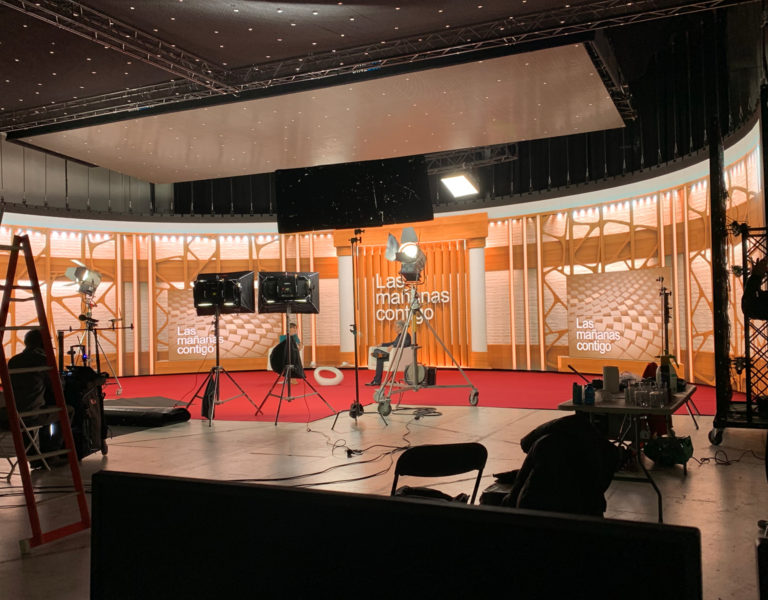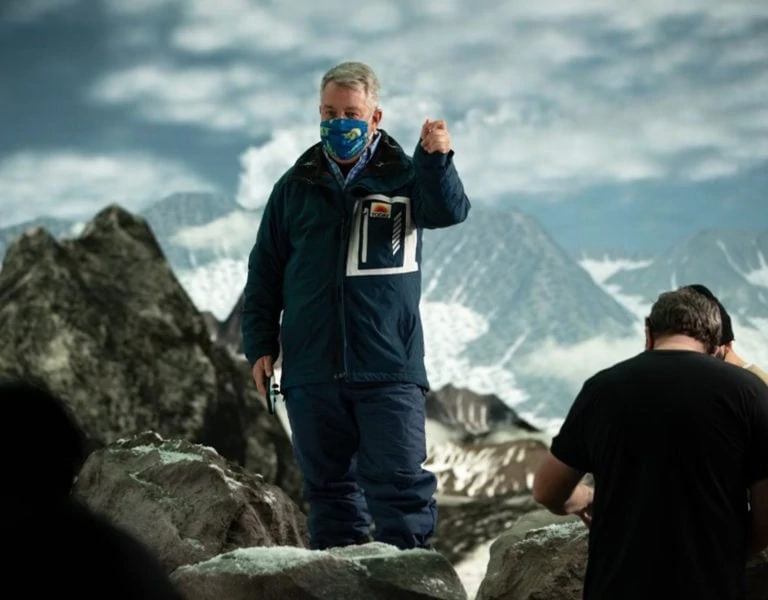Turf wars
As Gangs of London season two explodes onto screens, VFX supervisor and producer James Jordan and DP Björn Charpentier SBC reveals how virtual production helped to bring some of the show’s most jaw-dropping scenes to life.
If you haven’t seen Gangs of London, think Peaky Blinders on steroids: blood-soaked power struggles rip through the capital’s ganglands in the Sky series, masterminded by The Raid director Gareth Evans.
The VFX supervisor’s view
Over 12 action-packed shoot days at London’s MARS Volume, Bild Studios’ virtual production (VP) facility, a team assisted by VFX supervisor James Jordan harnessed the power of an immersive performance stage to shoot some of the show’s most challenging sequences. At the heart of the studio space is a 25.5 x 5m LED volume, which proved ideal for shooting Gangs’ driving sequences.
Jordan, whose decades of industry expertise spans BBC and ITV dramas as well as documentaries and commercials, began his career working on “basically anything to do with a video signal for a film set: video projectors, video walls, making specialist TVs for period movies like Sid and Nancy. So, it’s quite ironic that I’m almost specialising in screens on set again.”
Virtual production first came onto his radar in 2018, after he’d heard about it at some industry events. “It was something coming onto the horizon, but there weren’t many people using it,” he remembers. “I could see that it could be useful for productions of any scale because it gives you a lot of options. No matter what your budget is, there are always going to be things you can and cannot accommodate.”
When The Mandalorian broke new ground with its pioneering use of Industrial Light & Magic’s (ILM) StageCraft technology in late 2019, virtual production suddenly became Hollywood’s hottest topic. And when filming slowly started to emerge from hibernation post-COVID, productions like Gangs of London were keen to embrace shooting on a volume.
When Jordan started work on Gangs’ second season in 2021, he was invited to a meeting with Pulse Films co-founder Thomas Benski and some of the Epic Games team (creators of the Unreal Engine toolset for creating virtual environments). “The key thought process was, what does the tool add to the production, because there’s always another way to do things and virtual production isn’t a special golden bullet,” Jordan says. “So, we started looking at what types of tasks we needed to execute and how many of those could usefully be implemented within a virtual production environment.”

Driving and travelling shots immediately came to mind as being perfect for the volume, but the team ended up shooting everything from pick-ups to crucial sequences using the technology. Jordan recalls: “We had shots where we’d use our 3D scans of the sets to do pick-up dialogue, then we went from that to completing one of the key death sequences of one of the characters, carried out in a car where the character met with a painful death.” The latter, taking place in episode eight, was originally planned to be shot wholly on location, but due to time constraints, the volume stepped in. Jordan and his team filmed a 360 plate of the location, moving the car out of the way to get the shot, and then brought the footage to MARS, where they shot the action on the virtual stage.
Episode eight featured several driving shots and the team were eager to take a creative approach. One especially complicated Technocrane number involved a turntable and a 360 stitched plate, as Jordan explains. “We started inside the car, came out through the passenger window, past one of our characters and then went all the way round the car, so the car was rotating on the turntable with the background as the Technocrane came out. Then, we travelled through the back window, behind the heads of the characters, and exited the window. It was a really complicated shot; the sort of thing you wouldn’t be able to execute on the road.”
He adds that choreographing the Technocrane was the most challenging part of the sequence, which took around 25 takes to capture. “The side window of the car was a very small space to get through – literally just an inch either side of the crane. So, if there was any slight angle that wasn’t quite right, the crane wouldn’t get through the other side as well.”

Shooting the driving scenes in the virtual environment wasn’t only beneficial to the production team but also the cast, compared to typical green screen work. “What the actors found was that the driving plates are very natural, especially the ones driving through London,” says Jordan. “The actors could see when to stop at junctions, when to indicate, and when to turn within the plates, so they were able to engage with the environment and it gave them a much more realistic sequence. The volume enabled us to be a lot more interactive and the cast liked that.
“It was a bit strange – sometimes they found it made them a little bit dizzy! There were a couple of cast members who initially found it quite difficult to look at, but once they got used to it, they were fine.”
The driving backgrounds were meticulously pre-planned, with routes and times of day arranged even further in advance than normal. The team used two different systems, Driving Plates and Brownian Motion, depending on what kind of shot was needed. The Brownian Motion 10-camera rig results provided a very high-quality, stitchable image, whereas the Driving Plates shots were not as easily stitchable but gave great flexibility and wider range of driving environments.
The two Gangs DPs who worked with Jordan at MARS Volume were Björn Charpentier SBC and 2nd unit DP Fraser Rigg. Neither creative had shot in a volume before, although gaffer Leo Naessens had some useful previous experience. To enhance the scenes, the team didn’t want to solely rely on LED panels. “They give very good contextual light, but what they don’t give you is strong highlights,” says Jordan. “There was also the idea of motion, when you pass things like streetlights – especially when we shot the night-time sequences, so it was good to have a gaffer who had used the volume before.”
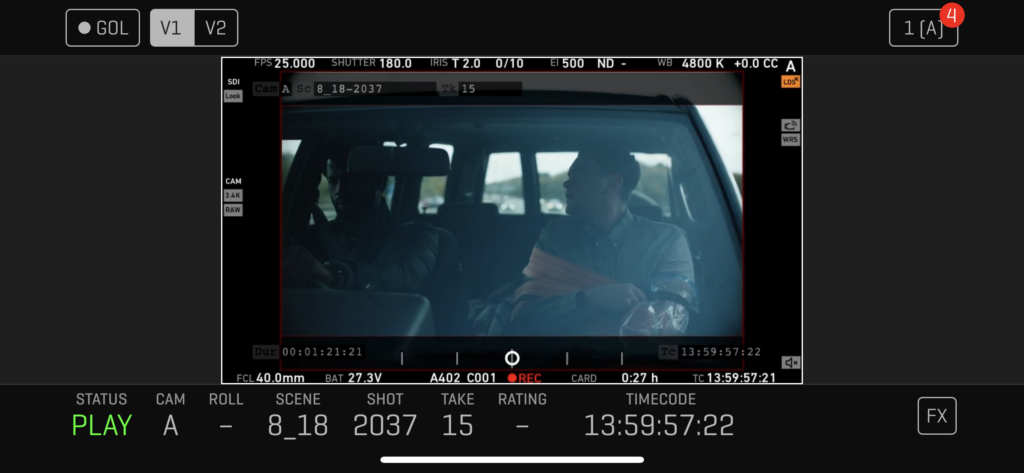
“We still added some lights to create the right tone for the scene on the actors faces, or create a stronger/harder beam of sunlight,” adds Charpentier.
Jordan credits the helpful team at MARS Volume for helping Gangs to achieve its virtual production aims. “The key asset was that the team there were very open to discussion, and they brought a lot of expertise to the conversation. I think it helped that we both understood the process: I was leading on the creative side in what the directors and DoPs wanted to photograph, and they were taking the lead on the technical aspect. It was a very good collaboration, and the space was very flexible.”
This flexibility allowed the production to increase the size of the LED screen to create the shot going around the car, and also enabled them to utilise the turntable – “a monster to get in and assemble,” Jordan grins.
If you’re looking to embrace all things virtual on your next production, Jordan has some valuable advice: “The key is advanced planning. You need to be very sure about what backgrounds you’re using whether it be shot plates or 3D generated, because they need to be created and processed in a unique way. Prior to the shoot, we knew exactly what background was going to be used for exactly which scene, and the type of camera moves, so on the day it was all very slick, and we were able to move quickly through the shooting days.”
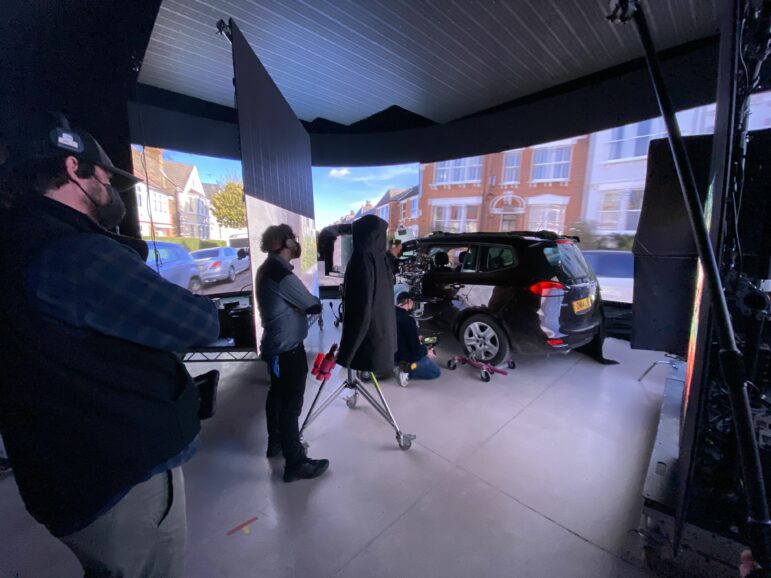
The cinematographer’s view
Björn Charpentier SBC was new to shooting in a volume and wasn’t quite sure what to expect. “In the beginning I was a bit hesitant about the VP because I’ve seen some major productions using this system and for some reason it didn’t work – you could see something was ‘off’,” he explains. “The difficulty was trying to understand what made it ‘off’. I talked to several ASC, BSC member about that but nobody really had a clear answer – it is still very new to a lot of people.”
With around 20 minutes of driving scenes in episode eight, the DP and director Corin Hardy wanted to get more creative than a standard car mount shot and took inspiration from Children of Men and War of the Worlds. “On our production we had several scenes that were very basic static shots and others that were more complicated,” Charpentier says. “We spoke with our 1AD if it was possible to start with those easy setups, so we could understand the system better before we got to our most complicated set up: being 360° rotating around the car, starting inside the car, tracking back to going outside the car, travelling circular around the car to end up at the back window of the car, continuing inside the car and ending our shot outside the car again.”
Although the 1AD was able to make it work and they managed to shoot two setups in the volume, COVID hit and the production had to shut down. Coming back after a short break, the actors’ schedules had changed and production restarted with the most complicated shot. “The learning curve was huge,” the DP admits.
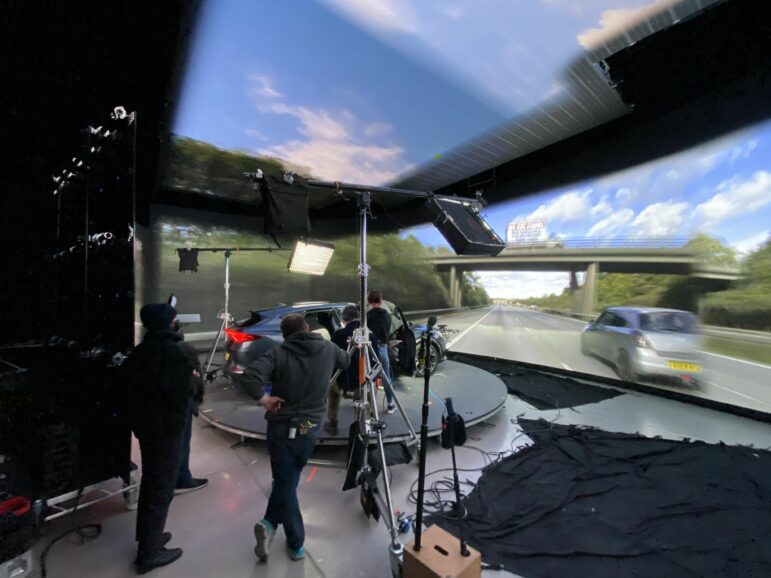
What are the benefits of virtual production from Charpentier’s point of view? “I think the big advantage of the system is that for a director you have way more control. We don’t have to deal with a road that is just long enough for one take and we don’t need to take into account the weather changes. Actors can go straight away back into a take – you don’t need reset all the vehicles. We can also create more creative angles to tell the story.
What’s more, as Gangs was shot in the winter, the daytime window was limited, and a lot of scenes included a quantity of blood being spilled, so shooting in the volume added extra practicality.
“That being said , I prefer to do a shot that is technically doable on a real road,” Charpentier adds. “If it gets too crazy, it will pull the audience out of the scene, unless your story can handle that kind of creativity.”
The team combined the two systems of shooting car scenes. “We shot on a real road with U-crane systems for wide shots and medium shots, but all the close-up shots we shot in the volume. We used an array camera to shoot 360 plates of the real location and then we had more time with the actors to finesse the scene in studio.”
Charpentier has some useful pointers for other DPs dipping their toes into the virtual production world. “The volume gives us a lot of freedom , but it takes time to set it right,” he says. “We had to align the camera neutral to the road , before we could start framing for our shots. So that is something that in the beginning we didn’t add in the schedule because we didn’t know. The first couple of days , it was really trial and error with the whole department. You really need to work within the systems limits , if you push too much those boundaries you start to feel something is off. The focus field is also something to take into account. Because you screen is closer than what the background would be in reality. So all of those things are booby traps. Every time we set up a shot, we would study it with all the departments to make sure it’s believable. What I took with me after this shoot is that when we do this again , I’ll be asking for more test time, so the whole team is aware of how to operate in such a system.”
The studio’s view
“MARS Volume has always championed innovation, and we were thrilled to support the Pulse Films team in bringing some of the series’ challenging scenes to life with virtual production,” comments Lauren Rogers, senior producer at Bild Studios. “Paired with our knowledge of virtual production and a speciality in simulated travel for driving scenes, MARS Volume were able to provide the maximum creative flexibility allowing Pulse Films to achieve some of the most unique and otherwise impossible shots compared to other production techniques.”

